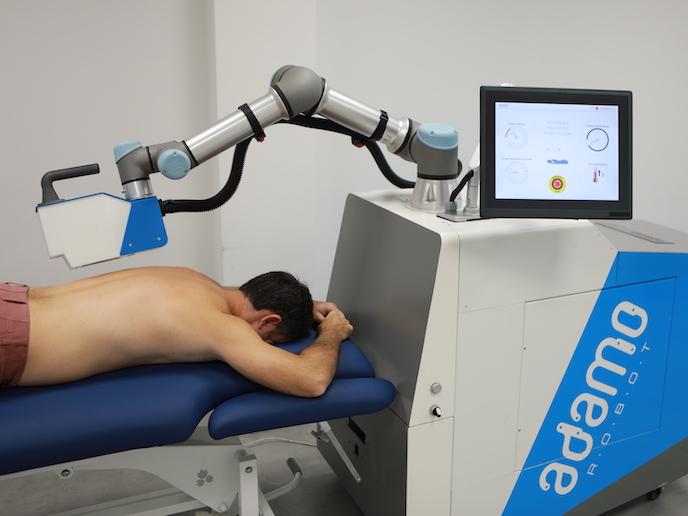Robotic innovation delivers relief for back pain sufferers
Back pain, a musculoskeletal disorder(opens in new window), is the leading cause of disability worldwide. It is also the most common reason that people visit their doctor and take time off work. “Even though back pain is extremely common, there are no established guidelines or protocols when it comes to diagnosis,” says ADAMO Robot project coordinator Carlos Jiménez, managing director at Adamo Robot(opens in new window) in Spain. “A typical 15-minute doctor’s visit is usually not enough to explain, understand and evaluate everything that’s going on in your achy back.” Diagnoses also tend to be subjective, and the success of treatments, which often involve massage sessions, depend a lot on the quality of the therapist. People also have different pain thresholds, which makes it difficult to assess the evolution of the condition.
Automated back therapy
Spanish firm Adamo Robot has sought to address these challenges and make physiotherapy(opens in new window) accessible to all. “Our aim is not to replace therapists, but to improve their productivity,” explains Jiménez. To achieve this, a fully automated unmanned physiotherapy robot has been developed. Using artificial intelligence (AI)(opens in new window), the robot identifies effective treatments and tracks the condition of patients. The robot begins by exploring the body with 3D thermal vision, identifying hot and cold spots. It then applies AI to detect the type of back injury and define necessary treatments. If treatment is necessary, the robot has a six-axis robotic arm, capable of articulated movements. Instead of touching the patient however, therapy is applied by releasing compressed air. “While some people might feel comforted by the placebo effect of hand treatment, contactless treatment is more hygienic,” adds Jiménez.
Physiotherapy for all
Jiménez and his colleagues are currently working towards developing a fully autonomous robot, capable of conducting independent sessions without the physical intervention of a physiotherapist. “To this end, the EU-funded project has enabled us to define our technological plan,” explains Jiménez. “We have also been able to optimise the mechanical design and prepare for mass production.” From a technical point of view, the temperature of the compressed air has been adjusted to make patients feel more comfortable. The project also helped the firm to understand which markets are open to adoption. “We performed a study to understand the cost of physiotherapy, the availability of physiotherapists as well as whether there were objections towards using our technology,” notes Jiménez. “Feedback from patients and physiotherapists has been very positive. We were able to prove the successful treatment of several back injuries. Patients reported that the treatment was unexpectedly painless.” The COVID-19 pandemic has resulted in an increased need to treat people coming out of intensive care units (ICUs). Adamo’s contactless robot has been shown to help muscle rehabilitation, while at the same time protect healthcare workers. “Medical staff have also been suffering increased lower back pain during the pandemic due to workload,” he says. The latest prototype is already on the market. The ideal scenario, according to Jiménez, would be to install robots in offices, airports, clinics, hotels and gyms, to give people the opportunity to quickly check on their back followed by a short 20-minute treatment. All data would then be stored and made accessible to patients. Ultimately, the company believes that its innovation will provide greater access to physiotherapy to those who need it, helping to address one of the leading causes of chronic pain and disability.







